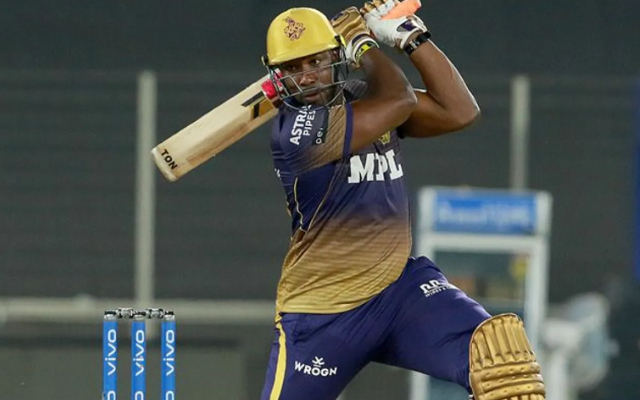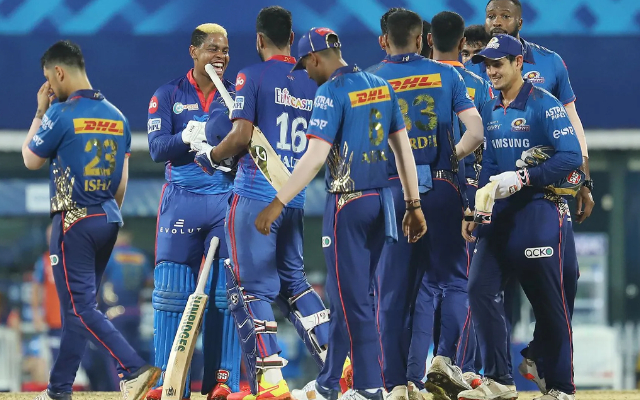IPL 2022: 5 new rules that will make tournament more interesting
If a few of these interesting rules are introduced, IPL might become even more fascinating.
View : 286.5K
8 Min Read


IPL Trophy (Photo Source: IPL/BCCI)

The Indian Premier League is a tournament that is highly anticipated by the cricketing fraternity and the on-lookers. Even the foreign players look forward to playing in the league and making a lasting mark. Every year it produces some intriguing contests and never fails to keep the fans at the edge of their seats.
Over the years, IPL has been an important platform to provide opportunities to budding cricketers. Many players take the center stage by exuding their fiefdom and then walk up the ladder of success. It is a no-brainer that IPL is one of the most celebrated T20 leagues in the world.
Every edition comes in with its own twist and entertainment and a few more new things can certainly garner the audacity of the tournament. The 2022 edition of the IPL is supposed to have 10 teams. The addition of the two new teams will further widen the opportunities for the players. Amidst these, if few interesting rules are introduced, IPL might become even more fascinating.
Here are 5 Interesting rules that can be implemented from IPL 2022:
1. 8 runs for sixes over 100 metres

The T20 games are often full of action-packed performances. A shorter format game is just incomplete without some gigantic boundaries. With some T20 behemoths like Chris Gayle, Andre Russel, AB de Villiers, and few more other players, big shots are not too rare to witness. And it’s always a matter of few shots that can change the fortunes of the game in T20s.
However, often the batters produce a lot of energy to hit a shot and send the ball out of the vision. In such scenarios, the thought of giving more than six runs to the batter for their incredible power-hitting abilities comes to the fore. Hitting the ball over 100m requires a lot of strength, and the batter who does so must get some added advantage.
Thus, giving eight runs to a six hit beyond 100m is a rule that can be brought in to make the tournament even more enthralling. This could do wonders to the game as it will help the chasing side in getting those extra runs. While the team that is setting the total will also benefit from the additional runs and will be in a position to put a strong total. This will be a huge positive for the teams who have some power hitters on their side.
2. Power Surge

In T20 cricket it is all about the momentum that decides which team is dominating the proceedings. In the shortest format, the sides enter the ground with the mindset of taking on the opposition bowlers in the powerplay. The initial six overs are thus crucial as if the batting side makes most of it they are able to build a strong foundation. On the other hand, if the bowling team chimes in with some crucial breakthroughs, it helps them to take the hold of the game.
The Power Surge rule can be an interesting one in the IPL. It was introduced in the Big Bash League 2020-21 wherein the six-over powerplay is broken into two parts of four and two overs. The first four overs at the start of the innings will be the first powerplay. The batting team is then allowed to take the remaining two overs of the power play in the second half of the match, that is after the 10th over.
If one tries to dive deeper into the impact this could make on the game, it appears that these two overs can benefit the batting team hugely as they can use it to gain momentum. It will not only help the side to chip in crucial runs in the middle overs but will also largely affect the results of the game.
3. An extra over for in-form bowler

The shortest format of the game challenges the players to exude their flair in the toughest of moments. The batters often calculate the game and decide which bowlers they would target. The plan is usually to play out the tough and in-form bowlers and then target the part-timers or the less fancied ones to post a strong total or chase the target.
When in form, any batter has the opportunity to play the entire innings and make most of the impetus. However, even when at his absolute best, the bowlers get just four overs to bowl in the T20s. In this case, a tweak in the quota of the bowlers will help them provide the team with important breakthroughs. Increasing the number of overs of the in-form bowlers will also minimize the tension of the skipper in case one of his bowlers is not having a good day.
It will make the game even trickier as the batters will have to face more balls from the lethal-looking bowlers. It will further test their prowess and present a compelling contest for the cricket on-lookers. With more overs of the prime bowler, batters will have no other alternative but to go big against them and that will build more excitement around the game.
4. Additional points for finishing games inside 10 overs

The T20 format is unpredictable, where the fate of the game changes at any given point. At times, the teams display immense character to completely outplay the opposition. They bring an all-rounder performance and blow the trumpet of their domination.
This extraordinary effort by the teams can be given more recognition by gifting the side with some bonus points. If a team chases down the total within 10 overs and emerges triumphant, they can be given a few extra points. In highly competitive leagues like the IPL, it is all about the race to make it to the top four teams to fancy the chances of qualifying for the playoffs. Often, until the last league game, it is not certain as to which four teams will battle it out against each other in the playoffs.
A rule like this to present more points to the team who have had a splendid outing in a particular match can add more thrill to the race of the points table. At times when there are two to three teams with the same points, the net run rate is the factor that is considered. However, with the introduction of this rule, a team that is slightly down the order can benefit and disturb the rankings, whereas the tops team will certainly confirm their qualification with these valuable extra points.
5. Penalty for slow over-rate

The slow over rate issue is something that has been in talks for a really long time now. The teams are expected to complete their innings in the given time. But sometimes, it doesn’t go that way and the teams are fined for the same. The question that arises here is does imposing a fine solve the issue?
In such a scenario, the idea of adding five penalty runs to the opposition team’s total comes to the fore. In the T20s, a single run can also decide the fate of the match and thus this ruling might prove impactful. In the shortest format, a run saved is equivalent to a run scored. And if it zeroes down to adding five penalty runs, the team will consciously make efforts to follow the timeline.
A fine might not hurt the team the way these five runs can. It will also change the fortunes of the game. The teams will have to put their thinking hats on to avoid giving any advantage to the opposition and thus the problem of the slow rate could possibly get a convincing solution.
Download Our App